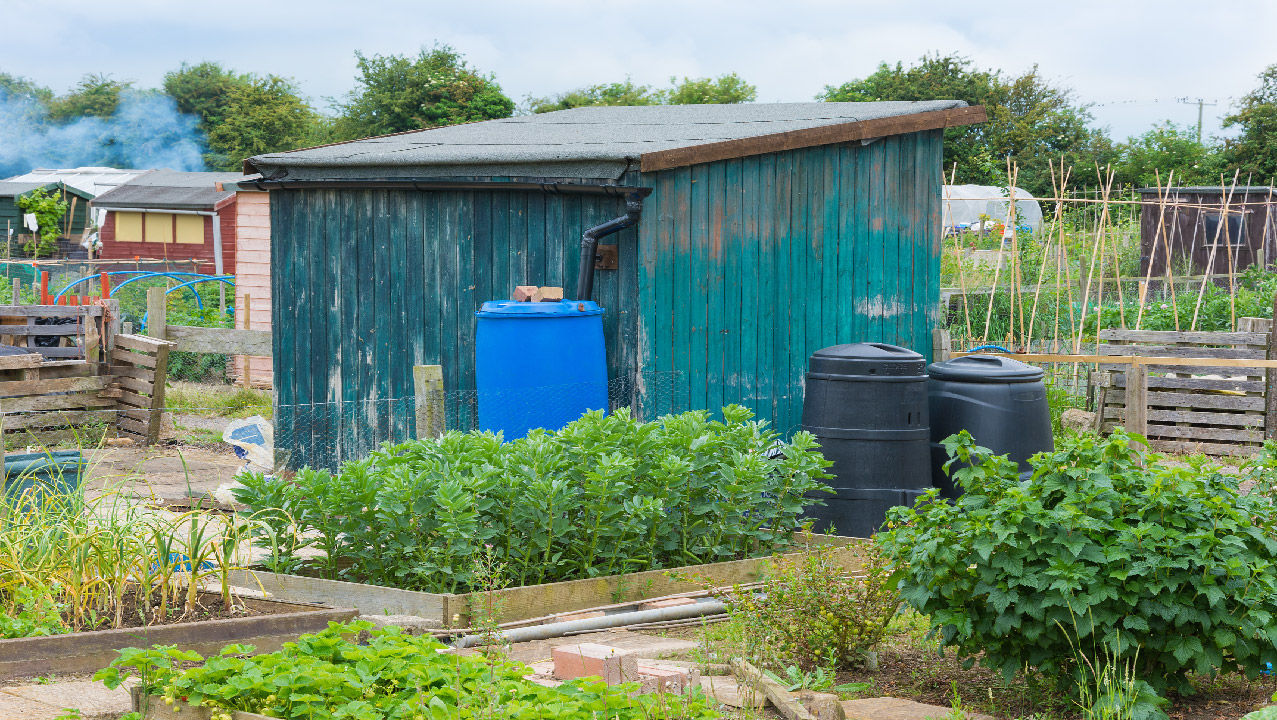Gravity Fed Irrigation Systems Tips
Jul 6th 2023
An excellent way to save money over the long term is to invest in rain barrels and gravity fed irrigation systems. Once up and running, they only require maintenance checks to ensure everything is running smoothly; otherwise, your plants will be well hydrated and taken care of. With gravity doing most of the work, you'll be free to turn your focus elsewhere. While planning your system, there are a few tips you'll want to keep in mind to make sure your irrigation system works as intended. And if you'd like to add some extra power to your system, you can always add a pump, though your system won't be strictly gravity fed any more. Read on to learn how you can set up your own gravity fed irrigation system.
Planning Your Gravity Fed Irrigation System
Most gravity fed systems are refilled through rainfall, often collected from the roof of the house or a suitably large out building like a garage or barn. There are typically filters placed on top of the barrels to prevent large debris from entering the system. Stored water is a valuable resource in many areas of the country, as well as during the hottest parts of the summer that bring little precipitation. Relying on gravity makes these systems extremely energy efficient, ideal for off-grid homesteads or those looking to decrease their energy footprint. The simplest way to utilize your collected rainwater is to simply add a spigot to the bottom of your barrel. From here, you can open it for a watering can or something similar. There are many ways to turn your water tank into an irrigation system, though all of them require your tank to be at a higher elevation than the irrigation line. Unlike municipal systems, your gravity fed system isn't pressurized.
Having multiple barrels or tanks allows you to irrigate in separate directions, so that's an important consideration when deciding how many you need. Large gardens may need to be divided into separate zones that each barrel feeds water into. The size of your garden and frequency of rain may also impact the number of barrels you decide on. Small, frequent rains in your area may require less storage capacity than sporadic downpours. Gravity-fed systems work well on flat surfaces until you reach about 25 feet away from the barrel. Gentle slopes are able to distribute water even farther away.
You are also able to irrigate raised beds, but there are a few extra considerations to take into account. If the water in your barrel remains higher than the soil you are trying to irrigate, then it should make it up without any problems. Multiple ups and downs will begin to limit the distance you can go because each one contributes to a drop in pressure in the system. You will certainly need extra pressure in the form of fuller catchment barrels to get your water up into raised beds.
There are a few things you can do to increase the water pressure in a gravity fed system, one would be to raise the tank's height. The higher the tank the more pressure you create.
Choosing Your Irrigation System
With a gravity fed water source, you may be considering drip irrigation or drip tape to water your plants. Be sure to include a fine mesh filter at the beginning of your line to prevent debris from entering your system. For the lowest energy system, you will likely need to turn your spigot on and off automatically, though there are a few battery-operated timers available. Non-pressure compensating drippers are commonly used, but they will not regulate the flow of the water coming out. Take apart emitters may also be a good option because they can be removed and cleaned in case any dirt gets in and clogs the system. With a higher flow rate, the emitters at the beginning of the line will likely emit much more water than those at the end of the line. Because the pressure is so much lower than municipal water supplies, you will likely need to leave your system on for a longer period of time to get the same amount of watering done. No matter which route you choose, investing in a gravity fed irrigation system is likely to be a great choice for you and your garden.

